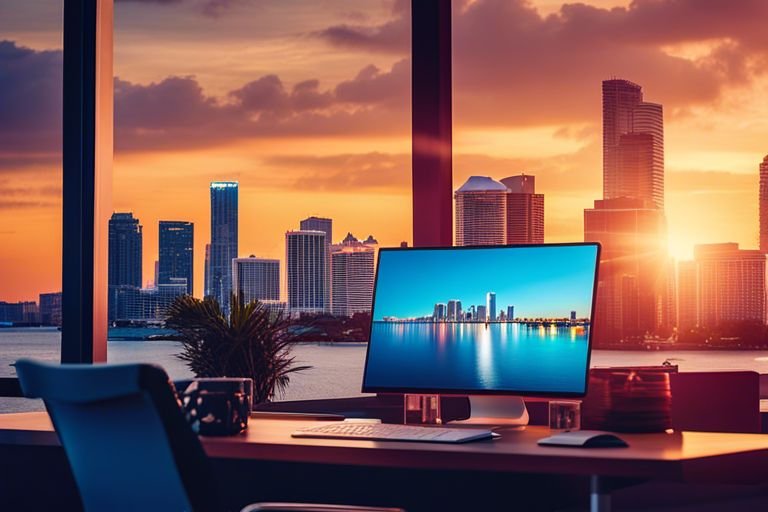TechPartners in the world of augmented reality, being armed with knowledge and expertise is crucial for success. In this blog post, we will explore into invaluable tips and insights from expert developers in the field. From mastering AR development tools to optimizing user experiences, these tips will provide you with a competitive edge in the ever-evolving landscape of AR technology. Stay tuned to discover how you can elevate your AR projects to new heights with the guidance of seasoned professionals.
Key Takeaways:
- Strong communication skills: Expert developers stress the importance of clear and concise communication with clients to ensure project success.
- Continuous learning: Keeping up-to-date with the latest AR technologies and trends is crucial for staying competitive in the field.
- Strategic planning: Developing a detailed roadmap and setting achievable milestones can help streamline the AR development process and lead to better outcomes.
Getting Started with AR Development
Understanding the Basics of AR
You must first understand the basics of Augmented Reality (AR) before venturing into development. AR is a technology that overlays digital information such as images, videos, or 3D models onto the real world through a device’s camera. This technology enhances the user’s perception of reality by integrating virtual elements into their physical environment.
Choosing the Right Tools and Platforms
When launching on AR development, choosing the right tools and platforms is crucial for a successful project. Some of the popular tools and platforms include Unity, Vuforia, ARKit, and ARCore. These tools offer a wide range of features and functionalities that can help streamline the development process and ensure compatibility with various devices. It’s important to research and select the tools that best align with your project goals and target audience.
Design Principles for AR Experiences
Enhancing User Engagement
Experiences in augmented reality should focus on enhancing user engagement by providing interactive and personalized content. This can be achieved through gamification elements, challenges, rewards, and social sharing features. Engaging users in a meaningful way can significantly improve their overall experience and encourage them to spend more time interacting with the AR application.
Creating Intuitive Interfaces
With creating intuitive interfaces, it is crucial to keep the user journey in mind. User-friendly interfaces with clear navigation, intuitive gestures, and minimalistic design can help users easily understand how to interact with the AR experience. Providing visual cues and feedback can guide users through the experience and enhance their overall satisfaction.
The success of an AR application often hinges on the usability of its interface. By prioritizing intuitive design and seamless interactions, developers can ensure that users have a positive and enjoyable experience. Incorporating user feedback and conducting usability testing can further refine the interface to meet the needs and expectations of the target audience.
Advanced AR Development Techniques
Not all AR development techniques are created equal. To truly stand out in the competitive landscape of augmented reality, developers must leverage advanced techniques to push the boundaries of what is possible. Here, we explore into some of the most cutting-edge strategies for AR development.
- Optimizing AR Performance
- Incorporating AI and Machine Learning
| Optimizing AR Performance | Incorporating AI and Machine Learning |
| With the increasing complexity of AR applications, optimizing performance is crucial. By utilizing AR TechPartners | Affordable Web Design Agency in Atlanta advanced optimization techniques, developers can ensure smooth rendering, minimal latency, and efficient resource management. | On the cutting edge of AR development is the integration of AI and machine learning algorithms. By incorporating these technologies, developers can enhance user interactions, personalize AR experiences, and enable more intelligent object recognition and tracking. |
Optimizing AR Performance
With the increasing demand for high-quality AR experiences, optimizing performance is crucial. By fine-tuning rendering pipelines, implementing efficient memory management, and leveraging hardware acceleration, developers can deliver seamless and immersive AR applications that resonate with users.
Incorporating AI and Machine Learning
On the forefront of AR innovation is the integration of AI and machine learning capabilities. By incorporating powerful algorithms, developers can create AR experiences that adapt to user behavior, provide personalized content recommendations, and deliver real-time contextual information. The potential of AI in AR is vast, from enhancing object recognition to enabling intelligent spatial mapping, pushing the boundaries of what AR can achieve.
Common Challenges and Best Practices
Troubleshooting Common AR Development Issues
Now, one of the most common challenges in AR development is troubleshooting technical issues that may arise during the development process. Issues like tracking inaccuracies, rendering glitches, or compatibility problems can hinder the user experience. To overcome these challenges, developers should meticulously test their AR applications on various devices and environments to identify and address any potential issues before deployment.
Maintaining and Updating AR Applications
Now, development of AR applications does not end with the initial launch. Regular maintenance and updates are crucial to ensure optimal performance and user engagement. It is common for AR applications to require updates to fix bugs, enhance features, or adapt to new hardware or software updates. Developers need to establish a system for monitoring user feedback, analyzing performance metrics, and implementing timely updates to keep the app relevant and functioning smoothly.
Practices: It is important for developers to prioritize regular maintenance and rapid updates to deliver a seamless AR experience. Implementing automated testing and monitoring systems can help identify issues early and ensure consistently high performance. Staying current with technological advancements and user expectations is also crucial for maintaining engagement and relevancy.

Final Words
Following this comprehensive guide from AR TechPartners, expert developers can benefit from valuable tips and insights to enhance their skills in the field of augmented reality development. By implementing best practices and staying informed about the latest trends and technologies, developers can create engaging and innovative AR experiences for their users. With a commitment to continuous learning and improvement, developers can stay ahead of the curve and make significant contributions to the ever-evolving world of AR technology. Note, the key to success in AR development lies in creativity, technical expertise, and a passion for pushing the boundaries of what is possible in this exciting and dynamic industry.
FAQ
Q: What is AR TechPartners?
A: AR TechPartners is a team of expert developers specializing in Augmented Reality (AR) technology. We provide innovative solutions and insights to help businesses leverage AR for their projects.
Q: How can AR TechPartners help businesses with AR technology?
A: AR TechPartners offers a range of services including AR app development, AR consulting, and AR integration for various industries. Our team of experienced developers can create customized AR solutions tailored to meet specific business needs.
Q: Why choose AR TechPartners for AR development?
A: AR TechPartners stands out for its expertise, creativity, and dedication to delivering high-quality AR experiences. With a proven track record of successful projects, we are committed to helping businesses stay ahead in the ever-evolving world of AR technology.



